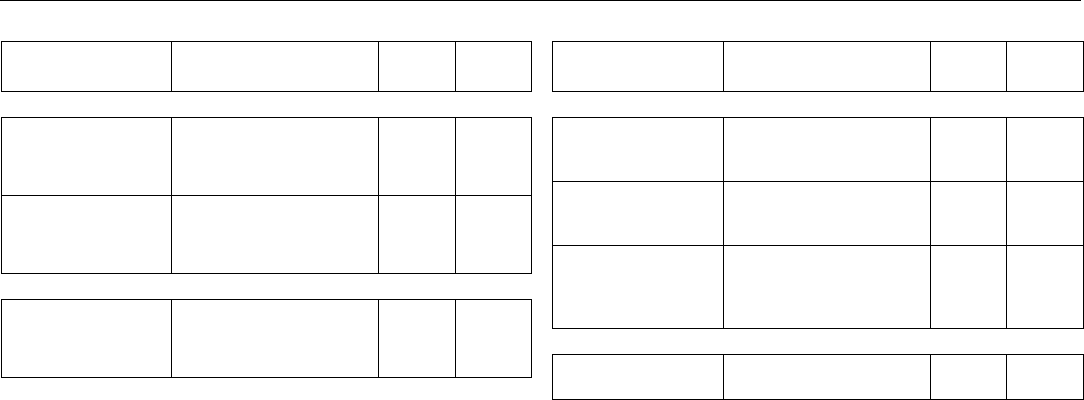
261Specifications
Lowest recommended tire pressure, cold tires
Tire size Load/speed
mph (km/h)
1)
Front
kPa/psi
Rear
kPa/psi
All season tires
215/55 R16 93 H 1–3 pers./0–100 (0–160) 240/35 220/32
4–5 pers./0–100 (0–160) 240/35 220/32
1–5 pers./100– (160–) 290/42 270/39
225/45 R17 94 V
XL/RF
1–3 pers./0–100 (0–160) 250/36 240/35
4–5 pers./0–100 (0–160) 250/36 240/35
1–5 pers./100– (160–) 300/43 290/42
Summer tire
225/45 R17 94 W
XL/RF
1–3 pers./0–120 (0–190) 250/36 240/35
4–5 pers./0–120 (0–190) 250/36 240/35
1–5 pers./120– (190–) 300/43 290/42
Tire size Load/speed
mph (km/h)
1)
Front
kPa/psi
Rear
kPa/psi
Winter tires
205/65 R15 94 Q
Winter tire
for 2.3t
1–3 pers./0–100 (0–160) 240/35 240/35
4–5 pers./0–100 (0–160) 260/38 260/38
215/55 R16 93 Q
Winter tire.
All variants.
1–3 pers./0–100 (0–160) 240/35 240/35
4–5 pers./0–100 (0–160) 260/38 260/38
225/45 R17 94 Q
XL/RF
Winter tire.
All variants.
1–3 pers./0–100 (0–160) 250/36 250/36
4–5 pers./0–100 (0–160) 270/39 270/39
Compact spare
T115/70 R16
Spare wheel
Max 50 (80) 420/60 420/60
1) Do not exceed posted speed limits.
By cold tires is meant tires that are the same temperature as the surrounding
air temperature.
The values for tire pressure in the table above are for tires at 68°F (20°C).
The tire pressure will increase as the tires become warm (e.g. during motor-
way driving), and decrease as they cool.
When the temperature of the tires increase or decrease by 10 degrees the
tire pressure will correspondingly increase or decrease by 10 kPa/2 psi
(0.1 bar).


















